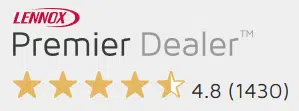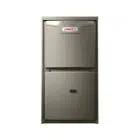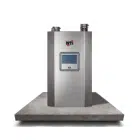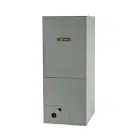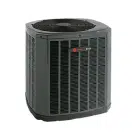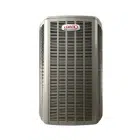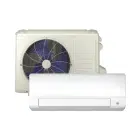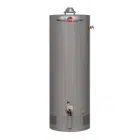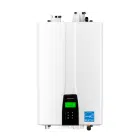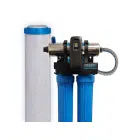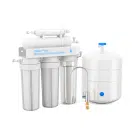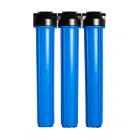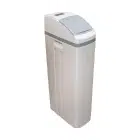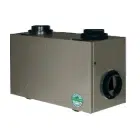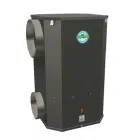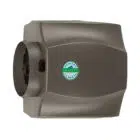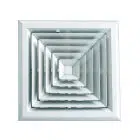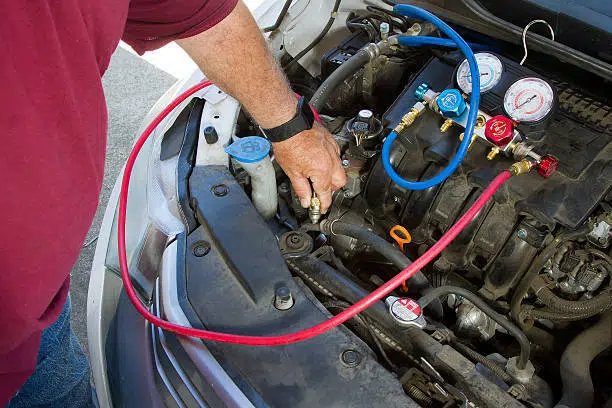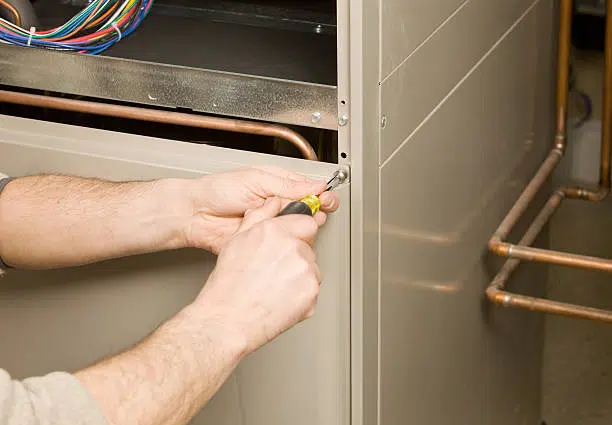
Table of Contents
Your furnace is the heart of your home’s heating system, keeping you warm during those long Canadian winters. But what happens when something goes wrong? Most modern furnaces in Canada are equipped with error codes that help identify issues. While the exact furnace error codes vary by brand and model, many of them follow a common pattern.
Understanding these codes can save you time, money, and frustration. In this guide, we’ll break down the most common furnace error codes, what they mean, and how to fix them.
How Furnace Error Codes Work
Furnaces communicate problems in two main ways:
- Digital error codes: These appear as alphanumeric codes (e.g., E1, E2, E3) on the furnace’s control board or thermostat display.
- Flashing indicator lights: Some furnaces use LED lights on the control board that blink in specific patterns to indicate errors.
To decode your furnace’s error message, check the manufacturer’s manual. However, if you don’t have it handy, many error codes are standard across different brands.
Each error code corresponds to a specific issue within the furnace system, such as problems with ignition, pressure switches, sensors, or airflow. Some furnace error codes indicate minor issues that can be fixed with simple troubleshooting, while others may require professional repair.
Additionally, some furnaces feature lockout modes, where repeated error codes cause the system to shut down for safety. In such cases, a manual reset may be required before further troubleshooting can be performed.
Understanding how these codes work helps homeowners quickly diagnose furnace issues and determine whether they need a DIY fix or a call to an HVAC furnace repair service.
Common Digital Furnace Error Codes
Here are some of the most frequently encountered digital furnace error codes and their meanings:
E1 – Low Gas Pressure or Fuel Supply Issue
If your furnace is struggling to get enough gas, it won’t be able to heat your home efficiently.
- Possible causes: Gas valve issues, blocked gas line, low gas pressure from the supplier.
- How to fix: Check if your gas supply is turned on, inspect for leaks, and ensure there are no kinks in the gas line. If the problem persists, call a professional.
E2 – Ignition Failure
Your furnace is trying to start but can’t ignite the burner.
- Possible causes: Dirty or faulty ignitor, gas valve failure, or airflow issues.
- How to fix: Clean the ignitor gently with a soft cloth, check gas flow, and make sure the burners are free of debris.
E3 – Overheating or High Limit Switch Error
The high-limit switch shuts down the furnace if it gets too hot.
- Possible causes: Dirty air filter, blocked vents, faulty blower motor.
- How to fix: Replace the air filter and make sure vents are open. If the problem continues, you may need a professional inspection.
E4 – Blower Motor Malfunction
If your blower motor isn’t working properly, warm air won’t circulate.
- Possible causes: Motor failure, capacitor issue, electrical problem.
- How to fix: Check power to the motor and listen for unusual noises. A technician may need to replace the capacitor or motor.
E5 – Flame Sensor Failure
The furnace isn’t detecting a flame, which can trigger a shutdown.
- Possible causes: Dirty flame sensor, faulty sensor, gas supply issue.
- How to fix: Clean the flame sensor with fine sandpaper and wipe it with a clean cloth.
E6 – Pressure Switch Failure
The pressure switch ensures proper airflow and venting.
- Possible causes: Clogged exhaust vent, faulty switch, blocked intake pipe.
- How to fix: Check and clean the vent pipes, make sure the switch isn’t stuck, and inspect wiring connections.
Error Code | Meaning | Possible Fixes |
|---|---|---|
E1
| Low Gas Pressure
| Check gas valve, inspect gas lines |
E2
| Ignition Failure
| Clean ignitor, check gas supply |
E3
| Overheating
| Replace air filter, check airflow |
E4
| Blower Motor Malfunction
| Inspect motor and capacitors |
E5
| Flame Sensor Failure
| Clean sensor, check gas flow |
E6
| Pressure Switch Failure
| Clean vent pipes, inspect switch |
Furnace Flashing Light Codes
Many furnaces don’t display digital codes but instead use LED lights that blink in specific patterns. Here are some common ones:
1 Flash – Ignition Lockout
- The furnace tried to ignite multiple times and failed.
- Fix: Reset the furnace by turning the power off and on. If it still won’t ignite, check the ignitor or gas supply.
2 Flashes – Pressure Switch Stuck Open
- The switch didn’t close when expected, indicating an airflow problem.
- Fix: Ensure the exhaust vent isn’t blocked and check for debris in the intake.
3 Flashes – Pressure Switch Stuck Closed
- The switch remained closed when it should have opened.
- Fix: This could mean a faulty pressure switch or a problem with the hose leading to it.
4 Flashes – Open High Limit Switch
- The furnace is overheating.
- Fix: Replace the air filter and check airflow. If the issue persists, call an HVAC technician.
5 Flashes – Flame Sensed When No Flame Should Be Present
- This can indicate a faulty gas valve or a problem with the flame sensor.
- Fix: Have a professional inspect the gas valve and sensor.
Flashing Code | Meaning | Possible Fixes |
|---|---|---|
1 Flash
| Ignition Lockout
| Reset furnace, check ignitor |
2 Flashes
| Pressure Switch Open
| Check vents, remove blockages |
3 Flashes
| Pressure Switch Closed
| Inspect pressure switch |
4 Flashes
| Overheating
| Replace air filter, improve airflow |
5 Flashes
| Unexpected Flame
| Inspect gas valve and sensor |
How Furnace Error Codes Vary Across Popular Brands
Each furnace brand has its unique features, which means error codes can slightly differ from one manufacturer to another. While many codes are universal, it’s important to consider the specific workings of a given brand and model. Here are some common furnace error codes for popular furnace brands, along with potential fixes:
Lennox
- Error E1 (Low Gas Pressure): This is often caused by a malfunctioning gas valve or gas leaks. It’s recommended to check the gas line and the system’s pressure.
- Error E2 (Ignition Failure): The issue could be a faulty ignition or a problem with gas flow. Cleaning the ignitor or checking the gas supply can resolve this error.
Read more about Lennox furnace error codes
Trane
- Error E3 (Overheating): Typically linked to a dirty air filter or blocked vents. Replacing the filter and ensuring the airflow is unobstructed may fix the problem.
- Error E5 (Flame Sensor Failure): This may occur due to a dirty or malfunctioning flame sensor. Cleaning or replacing the flame sensor should resolve the issue.
Read more about Trane furnace error codes
RunTru
- Error E4 (Blower Motor Malfunction): This can be caused by electrical issues or a faulty motor. Checking power connections and replacing damaged parts might be necessary.
- Error E6 (Pressure Switch Failure): Blocked exhaust pipes or a malfunctioning pressure switch are common culprits. Cleaning the pipes and inspecting the switch should fix this issue.
Read more about RunTru furnace error codes
Goodman
- Error E2 (Ignition Failure): Cleaning or replacing the ignitor and checking the gas flow can resolve this issue.
- Error E1 (Low Gas Pressure): Inspecting the gas lines for blockages or leaks will help eliminate this error.
Read more about Goodman furnace error codes
Carrier
- Error E3 (Overheating): Replacing the air filter and checking the ventilation system can address this issue.
- Error E4 (Blower Motor Malfunction): A motor replacement or checking electrical connections might be necessary to resolve this issue.
Read more about Carrier furnace error codes
Each of these brands has specific error codes and troubleshooting steps, and understanding these nuances can help diagnose and resolve issues more quickly. If your furnace continues displaying error codes despite attempting these basic fixes, it’s best to call a professional HVAC technician for further assistance.
How to Troubleshoot Common Furnace Error Codes
When your furnace isn’t working properly, troubleshooting can help you identify and sometimes resolve the issue without professional help. Here’s what to do:
- Check the power supply – Make sure the furnace is plugged in and that the circuit breaker hasn’t tripped. A lack of power can prevent the system from operating.
- Inspect the air filter – A clogged air filter can restrict airflow, causing the furnace to overheat and shut down. Replace it if it looks dirty.
- Reset the furnace – Sometimes, simply turning off the power, waiting a few minutes, and turning it back on can reset error codes and restore normal operation.
- Check for obstructions – Ensure that all vents and exhaust pipes are free from blockages such as dust, debris, or snow buildup.
Listen for unusual noises – Grinding, banging, or rattling sounds can indicate mechanical issues, such as a failing blower motor or loose components.
Preventing Future Furnace Issues
Preventative maintenance is essential for ensuring that your furnace operates efficiently and lasts as long as possible. A combination of professional care and regular DIY upkeep can help you avoid common furnace problems and costly repairs down the line. Here’s how you can stay ahead of potential issues:
- Change air filters regularly – Replace or clean filters every 1-3 months to maintain airflow and prevent your furnace from overworking, which can lead to higher energy costs and potential damage.
- Schedule annual maintenance – A professional technician can catch small issues, clean key components, and improve your furnace’s efficiency and safety before they become costly problems.
- Keep vents clear – Ensure supply and return vents are unobstructed to maintain proper airflow and avoid strain on your furnace.
- Monitor for warning signs – Watch for strange noises, weak airflow, or frequent cycling. Addressing these early can prevent more serious breakdowns later.
Maintaining your furnace doesn’t only rely on professional help – you can keep your furnace in top shape with simple, routine tasks. However, professional furnace maintenance is vital because an experienced HVAC technician has the expertise to spot potential issues that might go unnoticed by an untrained eye. Together, regular DIY maintenance and expert care will keep your furnace running smoothly, saving you both money and stress in the long run.
Conclusion
Furnace error codes can be frustrating, but they provide valuable insight into your heating system’s health. Addressing minor issues early can prevent costly breakdowns. If your furnace continues to display error codes despite troubleshooting, it’s best to call a professional.
At HVAC Service Solutions, we specialize in diagnosing and repairing furnace issues. Contact us today for reliable service and expert solutions to keep your home warm and safe all winter long.
FAQs
1. What do furnace error codes mean?
Furnace error codes are alphanumeric codes or flashing lights that indicate specific problems with your heating system. These codes can help homeowners identify issues such as low gas pressure, ignition failure, or overheating. Understanding these codes allows you to troubleshoot minor problems on your own or communicate more effectively with a technician. Common codes include E1 for low gas pressure and E2 for ignition failure. Always refer to your furnace’s manual for specific code meanings, as they can vary by model.
2. How can I reset my furnace after an error code appears?
If your furnace displays an error code or enters a lockout mode, resetting it can sometimes clear the issue. To reset, turn off the furnace’s power using the switch or circuit breaker. Wait for about 5-10 minutes to allow the system to reset, then turn the power back on. If the error code persists, you may need to perform troubleshooting steps or contact a professional HVAC technician. It’s also important to check for any underlying issues that may cause the error code to reappear after resetting.
3. What are some common furnace error codes and their causes?
Some of the most common furnace error codes include:
- E1: Low gas pressure – Could be due to a gas valve issue or blocked gas line.
- E2: Ignition failure – Often caused by a dirty or faulty ignitor, gas valve failure, or airflow problems.
- E3: Overheating – Caused by clogged filters, blocked vents, or a malfunctioning blower motor.
- E4: Blower motor malfunction – Often related to motor failure or capacitor issues.
- E5: Flame sensor failure – Can happen if the flame sensor is dirty or faulty. Identifying these codes allows for quick troubleshooting and repair, ensuring your furnace keeps running efficiently.
4. How do flashing light codes work on my furnace?
Some furnaces use LED lights to communicate errors through flashing codes. These codes indicate specific issues with your furnace, such as ignition lockouts or pressure switch problems. For example, 1 flash usually signals an ignition lockout, while 2 flashes might indicate a pressure switch stuck open. To interpret these codes, check the furnace manual or contact an HVAC technician if you’re unsure. These flashing light indicators are a convenient way to quickly pinpoint common furnace problems without needing a digital display.
5. Can I fix furnace error codes myself or do I need a professional?
Many furnace error codes can be fixed with some basic troubleshooting, like replacing air filters or resetting the furnace. However, some issues, such as faulty ignitors or pressure switch failures, may require a professional HVAC technician to repair. If you’re not comfortable working with electrical components or gas lines, it’s best to call a technician. Regular maintenance, such as annual inspections and cleaning, can help prevent many of these errors from occurring in the first place.
6. What should I do if my furnace keeps showing error codes after resetting it?
If your furnace continues to display error codes after resetting it, the issue may be more complex. Check for common problems like dirty filters, blocked vents, or issues with the gas supply. If those aren’t the cause, the problem could lie within the furnace’s internal components, such as the ignition system or pressure switch. It’s recommended to contact a professional HVAC technician to accurately diagnose and fix the issue to prevent further damage or potential safety risks.
7. What is the most common cause of a furnace ignition failure (E2 error code)?
An ignition failure (E2 error code) is commonly caused by a dirty or faulty ignitor. The ignitor is responsible for lighting the gas in the furnace, and if it’s covered in dirt or malfunctioning, it won’t ignite the fuel. Other potential causes include issues with the gas valve, a blocked burner, or airflow problems. Cleaning the ignitor with a soft cloth or replacing it can often resolve this issue. If the problem persists, a professional technician can inspect the gas flow and burner components.
8. Why is my furnace overheating (E3 error code)?
Furnace overheating (E3 error code) typically happens when there is a problem with airflow. Common causes include clogged air filters, blocked vents, or a malfunctioning blower motor. A dirty air filter can restrict airflow, causing the furnace to overheat and triggering the high-limit switch to shut the system down. To fix this, replace the air filter and ensure that all vents are clear of debris. If overheating continues, a professional technician should inspect the system for potential motor or blower issues.
9. How do I prevent furnace error codes from occurring in the future?
Preventing furnace error codes involves regular maintenance and early intervention. Change your air filters every 1-3 months to maintain airflow and prevent blockages. Schedule annual maintenance with an HVAC technician to inspect and clean your furnace’s key components. Keep vents clear of debris and make sure exhaust pipes are unobstructed. Monitoring your furnace for warning signs, such as strange noises or weak airflow, and addressing them promptly can also help prevent more serious issues down the line.
10. How can I tell if my furnace needs professional repair?
If you’ve tried basic troubleshooting steps, such as resetting the furnace, changing the filter, or clearing vents, and the error code persists, it may be time to call a professional. Furnace components like the ignitor, flame sensor, or blower motor can fail over time, and these repairs require specialized knowledge and tools. If you notice unusual noises, frequent cycling, or a sudden drop in heating efficiency, it’s also a sign that the furnace may need professional attention. Contact a licensed HVAC technician to accurately diagnose and fix the issue.
Share
